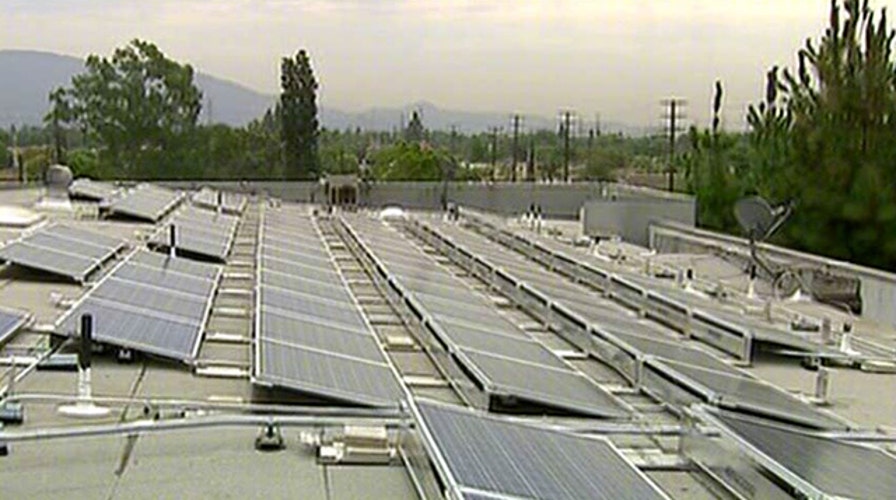Whether it is produced on a rooftop or in the desert, solar energy is generating profits and controversy.
“We want to support renewable energy,” said Hawaii state Rep. Marcus Oshiro. “But not at the expense of all the taxpayers who are heavily subsidizing this one component.”
So as the industry continues to grow, a number of utilities and officials are saying it’s time for solar to stand on its own – without the glut of subsidies.
When solar was a small part of the electrical grid, tax and ratepayer subsidies seemed insignificant. Advocates justified the incentives as necessary to jumpstart an upstart industry. But today, with panel prices falling 90 percent and thousands of systems being installed every week, utilities say it’s time to end or unwind those subsidies.
“We cannot sustain this rate of expenditure for this one sector,” said Oshiro. “It is about time they get off the training wheels and run on their own.”
In Hawaii, the number of solar systems has doubled since 2007. Solar tax credits are up from $34 million in 2010 to $173 million in 2012, the year Hawaii Electric proposed a moratorium on new solar installations.
There’s a similar backlash in Arizona, where the state’s largest utility wants out of what it considers a regulatory nightmare, which requires non-solar ratepayers to pay solar companies 25 cents per kilowatt hour for electricity it can generate or buy elsewhere for a nickel.
“We estimate that the average rooftop solar system on an Arizona home adds $20,000 in costs for non-solar customers over its lifetime,” Arizona Public Service CEO Don Brandt wrote recently in a newspaper editorial. “We believe that when all the facts are known, all parties, even owners of rooftop solar, who are today getting a very good deal, will acknowledge that the current subsidy just isn’t fair to other customers.”
In Los Angeles, which operates the nation’s largest solar program, the Department of Water and Power put solar customers on a sliding scale, reducing by a penny a year what it will pay for excess power generated by residential solar systems.
“The good thing about local solar is it is spread out,” said Los Angeles Department of Water and Power’s Anh Wood. “We believe in local solar not only because it is feeding customers right where they live, but we save on electron losses from larger projects far outside the city.”
In Los Angeles, solar advocates see every rooftop as a potential power plant. And the days when electricity gurus dismissed distributed solar as too expensive are over. Today, rooftop solar is seen as a competitive and significant contributor to a utility’s power portfolio.
Since 2009, when 16 companies sought permits to build large scale solar plants in the deserts east of Los Angeles, nine companies cancelled or postponed their projects. By contrast, rooftop solar installations jumped by 160 percent in each of the last two years.
“Panel prices have fallen 37 percent every year for the last 10 years,” said Christian Wentzel of Solar Providers, a company that leases rooftops from commercial landlords to install solar panels. The electricity is then sold to DWP or Southern California Edison.
“Solar keeps falling compared to other sources like coal and nuclear,” said Wentzel. “We produce power exactly where it is needed. We produce it and sell it at a fixed rate that is good for 20 years.”
The solar industry remains highly subsidized. Forced by politicians and regulators to buy renewables, utilities paid exorbitant rates for solar power on long-term contracts to meet state requirements.
As part of the 2009 stimulus, the federal government paid 30 percent of the cost of large solar project construction costs and usually loaned them the rest at below-market rates. Utilities were then forced to pay excessive prices for the power – from $130 to $200 a megawatt hour, four to eight times more than the cost of conventional power from natural gas or coal, because of state green power mandates.
Even renewable power advocates like the Climate Policy Initiative in San Francisco admit California ratepayers will be paying exorbitantly for the state’s early solar contracts. Case in point: the six-square-mile Ivanpah Solar Electricity Generating System near Blythe. The $2.2 billion project’s investors, Google and NRG Energy, will share a $700 million dollar tax break, according to the policy group’s study, while taxpayers will pay 43 cents for every dollar of energy the plant produces.
Their study is backed up by findings from a California Public Utilities Commission report, which found renewable power cost state ratepayers $6 billion in excess costs. Stanford University economist Frank Wolak says that translates into electricity rates 10 percent to 20 percent higher than they otherwise would have been.
Solar advocates say those days are over. The industry has matured and is no longer racing to meet unrealistic green power mandates.
“Costs have come down substantially,” says Wood. “We still see solar as an important part of a balanced approach.”





